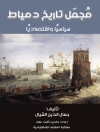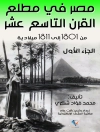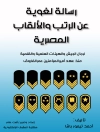The concept of resonance collapses the binary between subject and object, perceiver and perceived, evoking a sound or image that is prolonged and augmented by making contact with another surface. This collection uses resonance as an innovative framework for understanding the circulation of people and objects between England and its multiple Asian Easts. Moving beyond Saidian Orientalism to engage with ongoing critical conversations in the fields of connected history, material culture, and thing theory, it offers a vibrant range of case studies that consider how meanings accrue and shift through circulation and interconnection from the sixteenth to the early nineteenth century. Spanning centuries of traveling translations, narratives, myths, practices, and other cultural phenomena,
Eastern Resonances in Early Modern England puts forth resonance not just as a metaphor, but a mode of investigation.
Cuprins
1. Introduction.- I. Resonant Identities: Models, Circulations, Correspondences.- 2. “Not fit for any other pursuit”: Shifting Places, Shifting Identities in Ludovico di Varthema’s
Itinerario.- 3. “A Pattern to all Princes”: Locating the Queen of Sheba.- 4. “Endued with a natural disposition to resonance and sympathy”: “Harmonious” Jones’s Intimate Reading and Cultural Translation of India.- II. Textual Resonances: Receptions, Translations, Transformations.- 5. Ancient Persia, Early Modern England, and the Labours of “Reception”.- 6. “Enthusiastick” Uses of an Oriental Tale: The English Translations of Ibn Tufayl’s
Hayy Ibn Yaqdhan in the Eighteenth Century.- 7. The Manchu Invasion of Britain: Nomadic Resonances in Eighteenth-Century Fiction,
Chinoiserie Aesthetics, and Material Culture.- III. Aesthetic Resonances: Material Culture and Artistic Sensibilities.- 8. From Jehol to Stowe: Ornamental Orientalism and the Aestheticsof the Anglo-Chinese Garden.- 9. “A Mart for Everything”: Commercial Empire and India as Bazaar in the Long Eighteenth Century.- 10. Collecting in India and Transferring to Britain, or the Intertwined Lives of Indian Statues and Colonial Administrators (Late Eighteenth Century to Early Nineteenth Century).
Despre autor
Claire Gallien is Senior Lecturer in English Studies at the University of Montpellier 3, France.
Ladan Niayesh is Professor of English Studies at the University of Paris Diderot, France.












